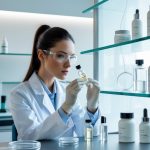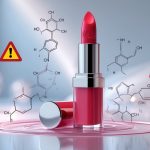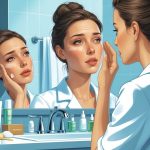Retinol Alternatives Dermatologists Quietly Endorse for Sensitive Skin
Botanical and Plant-Based Alternatives
Retinol? Yeah, not happening if your face hates everything. I can’t just slap it on and hope for the best. Plant oils seem smarter—sea buckthorn and rosehip are in every derm group chat, and carrot seed oil is this weird wildcard that nobody trusts until they actually use it. They all mess with skin texture, but not in that “why does my face sting” way.
Exploring Sea Buckthorn and Rosehip Oils
I still don’t get how sea buckthorn oil—bright orange, sticky, and kind of scary—somehow became a retinol stand-in. Dermatologists keep tossing it into anti-inflammatory routines, though. It’s loaded with fatty acids (omega-7? Never seen that in my kitchen), and a 2018 review said it helps your skin barrier recover. Big deal if you’re flaking off from exfoliants.
Rosehip oil always looks “Instagram natural,” but there’s actual science: tons of linoleic acid and pro-vitamin A, so it acts like retinol but doesn’t torch your skin. I found a study showing it helped post-surgical scars fade. The smell? Weird and nutty, not my favorite, but it never made me red. Three drops in moisturizer and suddenly I look like I didn’t binge-watch Netflix all night.
Quick reference for comparison:
| Oil | Key Compounds | Known Benefits | Texture/Scent |
|---|---|---|---|
| Sea Buckthorn | Omega-7, Vitamin E | Barrier support, anti-redness | Thick, orange, earthy |
| Rosehip | Linoleic acid, A, C | Even tone, scar healing | Light, nutty herb |
Understanding Carrot Seed Oil’s Effects
Carrot seed oil gets dismissed all the time—people think it’s just another essential oil. Not true. It’s not carrot oil, and nobody’s using it straight, at least nobody with a good dermatologist. The seed extract is full of antioxidants like beta-carotene, which turns into retinoic acid, but way less aggressive. I tried an overnight mask with under 3% carrot seed oil, and after two weeks? Glowier skin, less redness (saw that in some 2017 derm newsletter, not a beauty mag).
The scent? Musky, almost like wet dirt—if you like gardening, maybe you’ll dig it. I put it on my chin where I break out and, I swear, pimples healed faster. Maybe it’s the anti-inflammatory thing, since NIH says it’s got some antimicrobial abilities. Don’t wear it under foundation, though. The finish is weird and makeup slides off. Learned that the hard way.
Choosing Safe Alternatives During Pregnancy and Special Conditions
I don’t get why everyone dumps every serum on their face without thinking about pregnancy safety or what rosacea might do if you mess up one ingredient. Every doctor I talked to—like Dr. Hartman, who said, “It’s not worth risking retinoids when there are solid, pregnancy-safe actives”—couldn’t care less about beauty trends.
Pregnancy-Safe Skincare Picks
Standing in the pharmacy aisle, reading ingredient lists that seem to change every month, it finally hit me: anything with retinol has a giant “avoid while pregnant” warning. Not a joke. Bakuchiol pops up everywhere because real dermatologists, not just influencers, say it does most of what retinol does, minus the pregnancy risks. It’s gentler, boosts collagen, doesn’t make your skin freak out.
Vitamin C serums are everywhere as “brightening alternatives,” but Dr. Palm warned me, “Vitamin C can help with pigmentation and dullness in pregnancy, but always patch test—irritation isn’t rare.” Glycolic acid? Sometimes okay at low concentrations, but over 10%? Forget it. More irritation, less glow.
Brands love to scream “pregnancy-safe,” but unless they skip retinoids, salicylic acid above 2%, and hydroquinone, it’s just marketing. Sunscreen? Non-negotiable. Broad-spectrum SPF 30 or higher, every day, even if you’re inside. I forget more than I should, but honestly, there’s no excuse.
Managing Rosacea and Redness
Some days my cheeks look like warning lights. Rosacea is chaos—one night with retinol and I’m doomed. A derm tossed me a niacinamide serum sample, said, “Redness drops fast, barrier stays strong—just ditch alcohol and fragrance.” That’s it.
Azelaic acid is the sneaky one—just sits on shelves, but it fades hyperpigmentation and, in clinical trials, cuts down redness and bumps. American Academy of Dermatology said 40% of mild rosacea cases improved after 12 weeks on azelaic acid. Sounds super specific, but hey, I’ll take it.
Friends tried centella asiatica creams (cica)—sometimes it’s magic, sometimes it’s a breakout. No way to predict. And if you use anything with hidden alcohols or witch hazel because a “wellness” blog said so, good luck. SPF is still the rule, even mineral ones, but does anyone reapply enough? Nope. The worst part isn’t the redness; it’s people thinking you’re nervous or embarrassed, not just genetically doomed.



